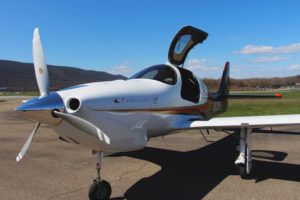 Airplane development is never a straight, narrow path. From the initial design concept—hopefully imbued with savvy market research and a firm understanding of the category—through early development, prototyping, testing, building the first article, flight testing, production development and delivery there are many, many ways to go wrong, get distracted, find insurmountable gotchas and even dilute the product sufficiently that it no longer meets the original intent nor is viable in the chosen marketplace. That in mind, it’s no wonder we have comparatively few all-new designs year on year. Evolution, not revolution, is normally the name of the game.
Airplane development is never a straight, narrow path. From the initial design concept—hopefully imbued with savvy market research and a firm understanding of the category—through early development, prototyping, testing, building the first article, flight testing, production development and delivery there are many, many ways to go wrong, get distracted, find insurmountable gotchas and even dilute the product sufficiently that it no longer meets the original intent nor is viable in the chosen marketplace. That in mind, it’s no wonder we have comparatively few all-new designs year on year. Evolution, not revolution, is normally the name of the game.
In an attempt to link it to Lancair’s other successes, it will be called the Evolution. If you squint hard enough, you can expand the V in the title to see it as a Lancair V. But, as we will see, it shares virtually nothing with the current kit aircraft besides a family name.
Looking Backward to See Forward
It might not seem too obvious a question to ask: If Lancair currently makes a pressurized, four-seat, turboprop kit aircraft , why design and build an entirely new one? What’s wrong with the Lancair PropJet, as the IV-P derivative is officially known?
As ever, a bit of history helps. The PropJet is indeed derived from the IVP, which came from the original IV of 1990. That airplane was designed by Lancair before current owner Joe Bartels took over, and was intended originally as a non-pressurized speedster; as such it had what at the time was considered scandalously little wing—just 98 square feet of wing in a 30-foot span. Even though the IV had decently large, effective flaps, this small wing created relatively high stall speeds, which in turn forced high landing and maneuvering speeds. In truth, the speeds weren’t completely out of line. The early IVs had a maximum gross weight of 2900 pounds and carried a claimed 61-knot landing-configuration stall speed. With a Continental TSIO-550 rated at 350 horsepower, the IV could, according to Lancair, cruise at 24,000 feet doing just under 300 knots true.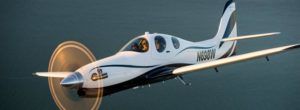
Lancair continued to develop the airplane, adding features that boosted the empty weight. From an early number of around 1800 pounds, the empty IVs soon ballooned to over 2000 pounds empty with pressurization, air conditioning and more equipment. More fuel came aboard, too. The first airplane carried 78 gallons total but eventually grew to 90 gallons (110 optional) on the piston airplane. In order to salvage payload, max-gross increased to the current 3550. A well-equipped IV-P is barely a four-place airplane.
Move up to the turbine version, which currently uses a Walter 601E capable of 700 shaft horsepower, and the fuel requirement moves upward with it. A belly tank added to the wing and winglet tanks help boost the PropJet’s capacity to 145 gallons, which seems like a lot until you consider that the Walter is gulping between 33 and 40 gallons per hour in cruise, variable by altitude. Even though the PropJet’s max-gross grew to 3800 pounds, it remains a four-place airplane largely in name only—very short hops excluded. PropJet owners seem to have satisfied themselves with a two-place-and-baggage conveyance that’s notably though not massively faster than the piston-motivated IV-P; perhaps the 4000-fpm initial climb rate helps seal the deal.
Clearly, and as Lancair principal Bartels and General Manager Tim Ong forthrightly point out, the Lancair IV platform has been taken much further than it was ever meant to and has the stretch marks to prove it. Moreover, because it was designed in the late 1980s (and debuted in 1990), it fails to capitalize on the many advances in composite design, construction and assembly that have been developed since. If you were in the big chair in Redmond it would seem plainly evident that the time had come for a clean sheet, something to address all the inherent shortcomings in having taken a 2900-pound, non-pressurized airplane and built it into a veritable fire breather with twice the horsepower and nearly half a ton more gross weight.
So Here It Is…
Bartels’ desire made metal—er, make that carbon fiber—is the airplane you see here in renderings, pieces and mockup, to be called the Evolution. As we went to press in mid June, the first airframe had yet to be assembled, though many of the parts were in place to do so, including the Pratt & Whitney PT6A-135 turboprop powerplant. Representative parts had been put through structural testing, and the focus of the engineering process had shifted from initial design to production readiness, working a team of four full-time engineers (housed at the Redmond HQ but separate from the rest of the kit-building contingent in an open-floor-plan loft enlivened by an actual mace hung on the wall) long, hard hours to get the details right.
That there was no actual airplane to sit in or fly on my visit would be startling only to those who have not seen the development process at close range. It is staggeringly detailed and, from the outside, dead boring. Bartels showed me an artist’s rendering of the Evolution at Sun ’n Fun 2006, and hoped at the time to debut the airplane within a year. The development cycle was pushed back to where the company hoped to have the prototype at Oshkosh 2007, but then realized that too much was left to do and that further development of the airplane would be more valuable than simply making an appearance. Hopes were, in June, that the airplane would fly not too long after AirVenture.
But there’s plenty to anticipate in the Evolution. Let’s start with the basics.
It is a large four-place design that’s a substantial step up in size from the IV-P/ PropJet. The fuselage is 4 feet longer, and the wingspan is a whopping 7 feet greater. There’s some 148 square feet of wing now, so that even at the planned 4300-pound max-gross weight, the wing loading is a considerably more reasonable at 29 pounds/square foot, less even than the original, lightweight Lancair IV. (Put in context: Epic claims an empty weight for its LT about the same as the Evolution’s max-gross. An EADS/Socata TBM700 is about that size as well. A Piper Meridian is 834 pounds heavier at max-gross, and weighs around 3400 pounds empty.)
According to Bartels, “We’ve looked at the market carefully and think there is a gap right where the Evolution fits. When I bought the company four and a half years ago, we went to Lance Neibauer’s house and saw what he envisioned a six-place plane.” It was a large turboprop, about the same size as the Epic LT and even had some visual similarities to it. “But,” Bartels continues, “we had discussed prior to the purchase that what Lancair really needed was a larger fourplace. Insurance companies and the FAA were, we thought, going to frown on a big airplane. We wanted to stay under the radar and make our own product.” Read that as a careful tightrope alk between what is deemed acceptable as an Experimental/Amateur-Built and the reality of Regular Joes building a 300-plus-knot pressurized turboprop. Bartels was part of a working group to help refine and/or defend—depending upon your point of view—the current “51% rule” and, we think, could clearly see the impossibility of bringing an airplane to market that couldn’t reasonably be constructed by amateurs.
As with the IV-P/PropJet, the Evolution is built mainly of carbon-fiber composites but the molds are all new, and subassemblies will be built on close-tolerance jigs that help determine critical dimensions before the builder ever gets near the kit. In general, the Evolution kit—affectionately known as Elvis by the engineers—has been designed to be dramatically easier to build and to better integrate into the company’s planned builder-assist program.
That assist program will start in Redmond, but it’s envisioned that a group of regional centers will help expand it. Bartels is candid in his expectation that many Evolutions will start with factory support and be completed in outside assistance centers. But it’s also expected that the kit will be made available in the traditional sense: Buy it, ship it home and start work. Incidentally, Lancair has taken the smart step in not releasing build-time estimates until the first airplane is done, but Ong predicts that it will be substantially less than a PropJet.
Power from Canada, Eh?
One of the big surprises on the Evolution is the presence of a Pratt & Whitney PT6A engine on the nose. “We worked extremely hard to convince Pratt to sell us engines,” Bartels said. “Nothing moves fast for them, but it was worth the eff ort.” By having a line to new engines and some factory support in the form of know-how, Lancair can offer a brand new powerplant as an option. The variant is the PT6A-135A, an engine also used on the Beech King Air C90, rated at 750 shaft horsepower; it will be limited to 550 for takeoff in the Evolution, which will increase altitude horsepower over versions rated only for 550. (Turbines are normally aspirated powerplants with two primary limitations, torque and temperature. Either one might be the limiting factor, depending upon altitude. Generally torque is the main limit at or near sea level, and while power falls off at altitude, the temperature range of the engine become the limit-setter.)
Not much else needs to be said of the PT6A beyond pointing out that it’s one of the most popular and highly regarded turboshaft engines made and has a large, experienced service network supporting it. Oh, but the rub is cost. A new 135A is expected to cost around $400,000, to which you might want to add the cost of the Evolution kit ($250,000) as well as avionics (figure a low of $80,000), paint and interior. Fortunately, there are used options out there. According to GM Tim Ong, “A builder could opt for a PT6A-21 or -34. These engines are out there for a lot less money than the -135A.” Still, you’re looking at $200,000-plus for an overhauled -21 (550 hp max) or -34 (750 max, like the 135A).
Airframe Details
Generally speaking, the airframe is conventional, with the main lifting and stabilizing surfaces considerably larger than the IV-P’s. The landing gear no longer retracts into the belly. “This was a nightmare to install,” says Bartels, who should know as he owns a IV-P himself. By moving the gear to the wings, it opened the belly and allowed the use of a trailing-link gear, which has the benefits of making most decent landings seem excellent and by cushioning some of the forces in a gear drop test. “We’re designing this airplane to [FAR] Part 23 standards,” says Ong. “We aren’t planning to certify it, but we will do all the work necessary to see that it could be. That means a 61-knot stall, proper handling qualities, the whole thing. In fact, we reworked the landing gear slightly to give us a good margin on the drop test,” Ong told me at a meeting early this year.
Bartels continues the discussion. “The Evolution will have certifiable handling qualities. We’re going to do the full load of tests, including spin tests. We’ll have an optional parachute, but I want this airplane to pass the spin tests anyway.” That option will include buried cables in the skin leading back to a module behind the baggage bay that holds the ’chute and its deployment package. As we spoke with Bartels and Ong, working through the details of the ’chute were clearly secondary to getting the first article flying, so expect to hear more about that part of the program in a later report.
Back to the systems. The gear will be electro-hydraulic, as it is in the IVP, with the maingear swinging inward; there are no inner gear doors, just panels on the gear struts to seal the cavity with the gear retracted. The nosegear will be steered by an independent, unpowered hydraulic system.
Wing tanks can be much larger than in the IV because of the larger wing, which is a custom airfoil for Lancair; planned standard fuel is 140 gallons, with 170 available as an option. Those tanks, which are sealed bays inside the wing, are separated by just six ribs per wing, spanning to massive carbon-fiber spars. Control methodology would be generally familiar to a IV-P builder, with side sticks operating pushrods and torque tubes for pitch and roll. One big difference is that the pitch control descends down the side of the fuselage to minimize its impingement on the cabin, and runs under the floor of the baggage bay. To reduce control-force buildup when pressurized, the controls all penetrate the pressure vessel through bell cranks that are sealed at the pivot; there is no need to wrap a boot around a tube to seal the bulkhead. The rudder remains cable activated.
Performance and Comfort Are the Goals
Obviously, until the Evolution is flying, claimed performance has to go unverified. But the potential is clearly there. Lancair is aiming for 335 knots TAS at 25,000 feet on 39 gph. Economy cruise is expected to yield 306 KTAS on 30 gph for an 1100-n.m. range with a 45-minute reserve. Maximum operating altitude is listed as 35,000 feet, but Reduced Vertical Separation Minima (RVSM) certification is required to fly above 28,000 feet (FL280) and it’s not currently in the budget to seek that approval. Initial rate of climb is listed as 4000 fpm, which is the same as the PropJet, with the extra weight of the Evolution largely off set by the greater wing area. The cabin will carry a 6-psi differential, giving an 8000-foot cabin at 28,000 feet; the current IVP’s differential is 5 psi. Initial versions of the door and the baggage door disclose large, robust structures that were designed from the outset for this greater differential and will, in fact, be tested along with the fuselage to 12 psi.
Look at the CAD drawings, talk to the engineers, touch some of the early components, and it’s clear that Lancair has, in some perverse way, benefited from having to live with an airplane taken way beyond its original mission. The Evolution uses the PropJet as a mere starting point, its performance targets loftier, its engineers tremendously more informed, every new technology like CAD-to-buck moldmaking in use. Lancair’s Joe Bartels and Tim Ong—like many on staff — have the look of men working too many hours for too long. They, like the rest of us, can’t wait to see it flying.

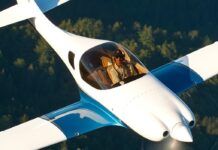

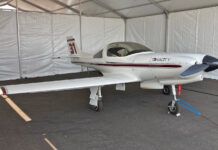
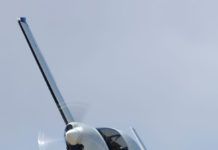
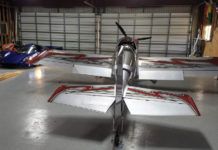

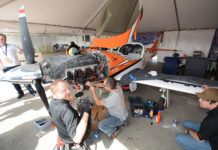
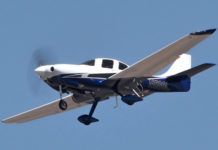
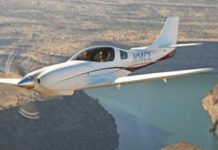
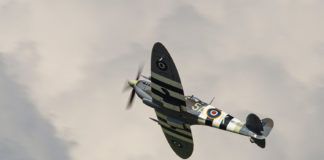
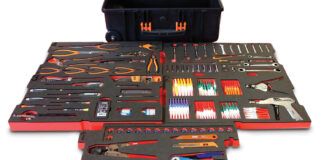
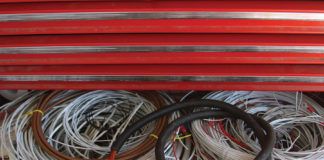
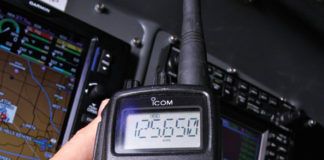
Please advise who was designer of Evo and why the aierlons are drooped 3/8 of an inch. I have the only EVO in Australia no 083 and am a little disappointed with performance